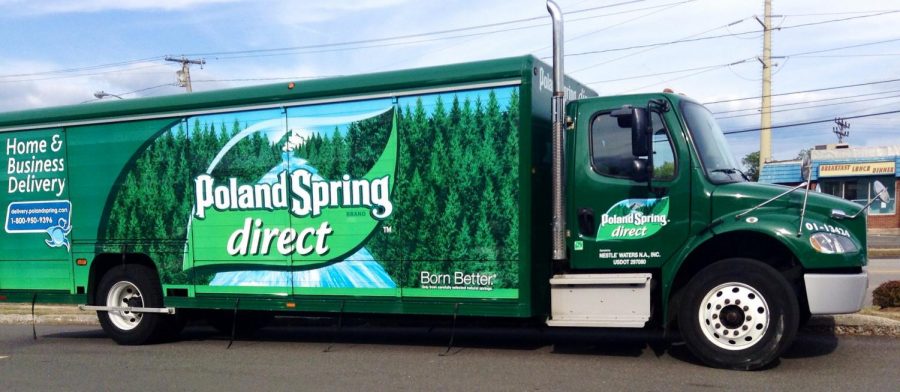We are living during a time when environmental awareness is at an all-time high. This awareness has gained significant momentum, especially in the past decade. People are becoming more concerned with the way they affect the environment and want to work toward a sustainable and environmentally-friendly future.
This awareness is clearly reflected in the public’s shopping habits. According to Nielsen’s Global Corporate Sustainability Report, 58 percent of respondents were willing to pay more for a “product from a brand known to be environmentally friendly” and 69 percent were willing to pay more for a “product from fresh, natural, organic ingredients.” The statistic, understandably, jumps among the millennial generation, with 73 percent willing to pay extra for sustainable products.
From a company or brand’s perspective, being environmentally friendly pays, and many companies use this as a basis for being environmentally friendly. For example, the activewear company Patagonia has tried to go green by “building repair centers around the world to increase the longevity of their products and lower their carbon footprint.” Another example is Seventh Generation, a company that sells cleaning and personal care products. It “revolutionized the cleaning industry with eco-friendly cleaning products free of harmful toxins and chemicals.” Both Patagonia and Seventh Generation were included in Forbes’ 2014 list of companies considered best for the environment.
On the other hand, there are companies that take advantage of the public’s environmental concerns to turn a profit. This is where what is known as “greenwashing” runs rampant. Greenwashing is a tactic companies or corporations use to appear “greener” than they actually are. Instead of spending time and money on improving their business practices to reduce their environmental impact, they spend them on packaging, advertising and marketing to appear sustainable and eco-friendly.
One of the most infamous examples involves oil company Chevron, which in the 1980s campaigned its environmental dedication through a series of ads while simultaneously violating the Clean Air Act, the Clean Water Act and spilling oil into wildlife sanctuaries.
Throughout the years, greenwashing has become more subtle, while still managing to trick consumers. What are some signs of greenwashing today?
- Vague and misleading words: Companies greenwash by using vague and nonspecific fluff words, such as “green” or “pure,” which are misleading to the consumer. Without third party certifications, terms like these don’t mean anything. Take a look at this line of disposable diapers from Huggies. What exactly makes these diapers “pure and natural,” as stated on the packaging? A small piece of organic cotton on the outside. The misleading terms lead the consumer to believe that the diapers are environmentally friendly when in fact, disposable diapers accountfor more than 3.5 million tons of waste in landfills. In fact, the diapers contain substances such as polypropylene and polyacrylate which are harmful to the environment.
- Imagery: Another greenwashing strategy that companies use involves the use of imagery. Using lush, green scenery, mountains, rivers, waterfalls, etc. on packaging materials misleads the consumer regarding the company’s environmental impact. Bottled water brand Poland Spring is an example of this kind of greenwashing. The company’s products portray packaging with fields, trees and sparkling blue water, even though single-use water bottles make an enormouscontribution to the plastic pollution in our oceans, lakes and rivers.
- Lesser of two evils: A company could claim to have gone green with a new line of products when in fact it is only somewhat less harmful than before. “Organic tobacco” is an example of this strategy. The tobacco being organic does not make much of a differencein the harm that it poses to both the body and the environment.
- Outright lying: While the other strategies are at least creative, this one is exactly what it sounds like: Companies make claims about their products’ eco-friendliness that are not supported by any evidence. For example, the apparel company Lululemon Athletica produced a line of clothing that were marketed as being made from seaweed, which would “release marine amino acids, minerals and vitamins into the skin upon contact with moisture.” Upon testing, however, it was found that there was no difference in mineral levels between regular t-shirts and products from the new line.
The points above are only a few strategies that companies use. There are surely countless other tactics that are hiding in plain sight.
Consumers’ rightful demand for green and eco-friendly products is responsible for the increase in greenwashing in recent years. However, we cannot depend on companies and corporations to be outright truthful about their environmental practices. Instead, it is up to the consumer to take charge and research the green claims that companies make. Reading the label of “green” products, checking for third party certifications for terms such as “organic” and “eco-friendly” and fact-checking claims through some research are all relatively easy tasks that consumers can do to ensure that they are not falling prey to greenwashing.
As a society, we are finally in agreement about the importance of environmental conservation and sustainability, and now we must thwart the tactics employed by companies and corporations to keep working toward achieving that goal. So just remember that despite all the greenwashing that you might be presented with, you – the consumer – ultimately hold the power of choice.
Rithika Senthilkumar is a Collegian columnist and can be reached at [email protected]



















